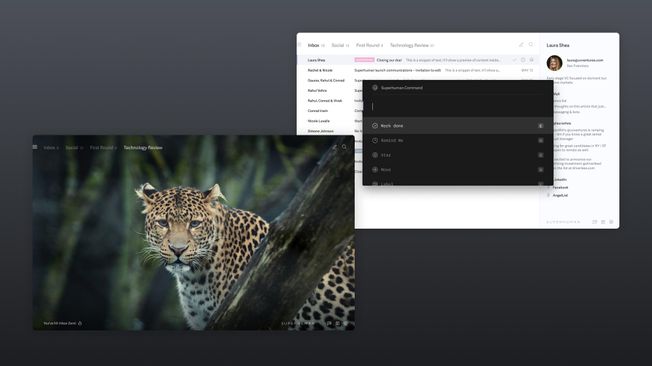
Most companies are buying expensive waiters when they need sous chefs.
A waiter stands there until you order. A sous chef preps ingredients, monitors multiple dishes, and anticipates what the kitchen needs next. When something goes wrong, they fix it without asking the head chef.
Traditional AI is a waiter. Agentic AI tools are sous chefs.
Gartner predicts that by 2028, AI will make 15% of our daily work decisions autonomously. This creates economic selection pressure. Early adopters will gain cost advantages that become impossible to overcome, just like what happened with cloud computing.
We're at that inflection point now.
What makes AI "agentic"?
Imagine you need to plan a dinner party for 20 people. You could:
Option A: Call a catering company every time you need something done. "Can you send me a menu?" Wait for response. "Can you check dietary restrictions?" Wait for response. "Can you coordinate delivery?" Wait for response.
Option B: Hire an event planner who knows your preferences, budget, and guests. They research options, handle logistics, coordinate vendors, and send you updates. They only interrupt you for decisions that actually require your judgment.
Traditional AI is Option A. Agentic AI is Option B.
They work from outcomes backward. Instead of waiting for step-by-step instructions, they start with your goal and reverse-engineer the path. You want higher customer satisfaction scores? They analyze complaints, identify patterns, draft policy changes, and implement solutions. You wake up to progress reports, not task lists.
They remember context across time. Regular AI treats every conversation like meeting a stranger. Agentic AI builds a model of how you work, what you value, and what good outcomes look like. It knows you hate meetings before 10am, prefer data over opinions, and always want the contrarian perspective included.
They coordinate with other systems automatically. The magic isn't in individual capabilities, it's in orchestration. Your sales AI qualifies a hot lead while your marketing AI personalizes follow-up content and your calendar AI blocks time for the demo call. No human played traffic cop.
They adapt without breaking. When unexpected situations arise, they don't crash or wait for new programming. They evaluate options based on learned patterns and stated objectives, then make reasonable decisions within defined boundaries.
The companies that understand this distinction will compress decision cycles from days to hours. The companies that don't will be competing with one hand tied behind their back.
Try SuperhumanThe tools reshaping how work gets done
Enterprise command centers
Moveworks eliminates the IT help desk queue entirely. Instead of employees waiting days for password resets or software access, requests get resolved automatically using the same decision trees that senior technicians would follow. IT teams go from reactive firefighting to proactive infrastructure building.
Aisera handles the invisible workload that consumes 40% of knowledge worker time. Customer inquiries get researched and resolved before they reach human agents. HR requests process automatically. Sales leads flow through qualification and nurturing sequences that adapt based on engagement signals.
ServiceNow manages complex approval chains and compliance workflows that span multiple departments. The kind of processes that usually require dedicated project managers now run themselves with human oversight only for exceptional cases.
UiPath bridges the gap between simple automation and complex judgment calls. One platform handles both the routine data processing and the contextual decisions that determine next steps.
Developer force multipliers
OpenAI Operator enables AI that browses the web like a research analyst. It can gather competitive intelligence, monitor industry trends, and extract insights from multiple sources without human guidance on where to look or what questions to ask.
CrewAI lets teams build specialized AI agents that collaborate like consulting teams. Each agent develops expertise in specific domains while contributing to shared objectives. The open architecture means companies maintain control over proprietary processes and decision logic.
Microsoft Autogen provides enterprise-grade multi-agent systems with built-in security and compliance guardrails. Teams can deploy collaborative AI within existing Microsoft environments without compromising audit requirements or access controls.
AgentOps solves the operational complexity of running AI agents at scale. When your business depends on autonomous systems, you need monitoring, debugging, and deployment tools built for production reliability.
Specialized problem solvers
Orby AI learns processes by observation rather than programming. Show it how experienced employees handle complex scenarios, and it builds decision models that replicate expertise across similar situations.
Relevance AI democratizes agent development through visual workflow builders while maintaining sophisticated logic and decision trees. Business teams can create complex automation without technical dependencies.
Adept works with legacy software that lacks APIs or integration capabilities. The AI interacts with applications through user interfaces, making decades-old systems accessible to modern automation.
LivePerson transforms customer service from cost center to revenue driver. AI agents handle routine inquiries while identifying upsell opportunities, renewal risks, and expansion potential that human agents might miss.
Workday embeds intelligent decision-making directly into finance and HR workflows. Approvals, compliance checks, and data validation happen automatically based on policies and precedent.
Cognosys turns web research from hours of manual work into minutes of systematic data collection. AI agents navigate complex information landscapes and synthesize findings without human guidance.
DataRobot Agentic AI addresses enterprise governance concerns through controlled environments for testing agent behavior, comprehensive logging of autonomous decisions, and guardrails for sensitive operations.
Core capabilities that matter
Autonomous planning and execution mean these systems work like senior employees, not junior assistants. They break complex objectives into logical steps, execute those steps while monitoring for obstacles, and adapt strategies based on real-time feedback. AI workflow automation tools eliminate repetitive tasks, run processes continuously, and create standardized workflows that scale with business growth.
Multi-agent coordination enables specialized AI systems to collaborate like high-performing teams. Sales agents qualify prospects while marketing agents personalize outreach and success agents monitor account health. The coordination happens through shared data and synchronized decision-making, not human project management.
Deep system integration makes autonomous operation possible by connecting agents with existing business tools. CRMs stay updated, project management tools reflect current status, and communication platforms receive relevant notifications without manual data entry or context switching.
Enterprise security and compliance address audit requirements without slowing down automation. Every agent decision gets logged, role-based access controls determine what actions agents can take, and approval workflows govern sensitive operations. Companies can move at machine speed while maintaining human oversight.
No-code customization puts agent development within reach of business teams who understand processes but lack programming expertise. Visual builders, template libraries, and logical flow charts enable domain experts to create sophisticated automation.
Continuous optimization separate agentic systems from static automation that breaks when conditions change. These tools analyze performance patterns, identify improvement opportunities, and refine decision-making based on outcomes. AI automation increases productivity by 66% while reducing errors and operational overhead.
Where the impact compounds
Think about compound interest. Small improvements that build on themselves create exponential results over time. Agentic AI works the same way across business processes.
Support operations become self-improving systems instead of cost centers. Each resolved ticket teaches the AI better resolution paths. Each customer interaction improves response accuracy. Instead of linear scaling where more customers require more support staff, you get logarithmic scaling where AI capabilities grow faster than demand.
Revenue operations shift from reactive to predictive. Lead qualification improves as AI learns from closed deals. Outreach sequences optimize based on engagement patterns. Pipeline forecasting becomes more accurate as AI processes more deal data. Sales teams focus on relationship building while systems handle research, follow-up, and administrative coordination.
Knowledge work experiences the most dramatic transformation. Research projects that required days of human time complete in hours with comprehensive analysis. Content production scales from individual output to systematic generation across multiple channels. AI executive assistants evolve from task executors to strategic partners that anticipate needs and prepare solutions before problems become urgent.
Industry-specific applications address regulatory and operational complexities that generic tools cannot handle. Finance organizations automate risk assessment while maintaining audit trails. Healthcare systems coordinate patient care while ensuring privacy compliance. Manufacturing optimizes supply chains while maintaining quality standards. Vertical expertise becomes the differentiating factor.
The strategic inflection point
We're at what Andy Grove called a strategic inflection point. Just like cloud computing, early adopters will gain cost advantages that become impossible to overcome. Each transition creates two groups: those who adapt early and those who scramble to catch up.
Domain-specific solutions are multiplying because healthcare, finance, and manufacturing need AI that understands their regulations and operations, not just general capabilities. Generic tools won't cut it when compliance and specialized knowledge determine success.
The question isn't whether autonomous AI will reshape business. The question is whether you'll drive that change or get left behind.





